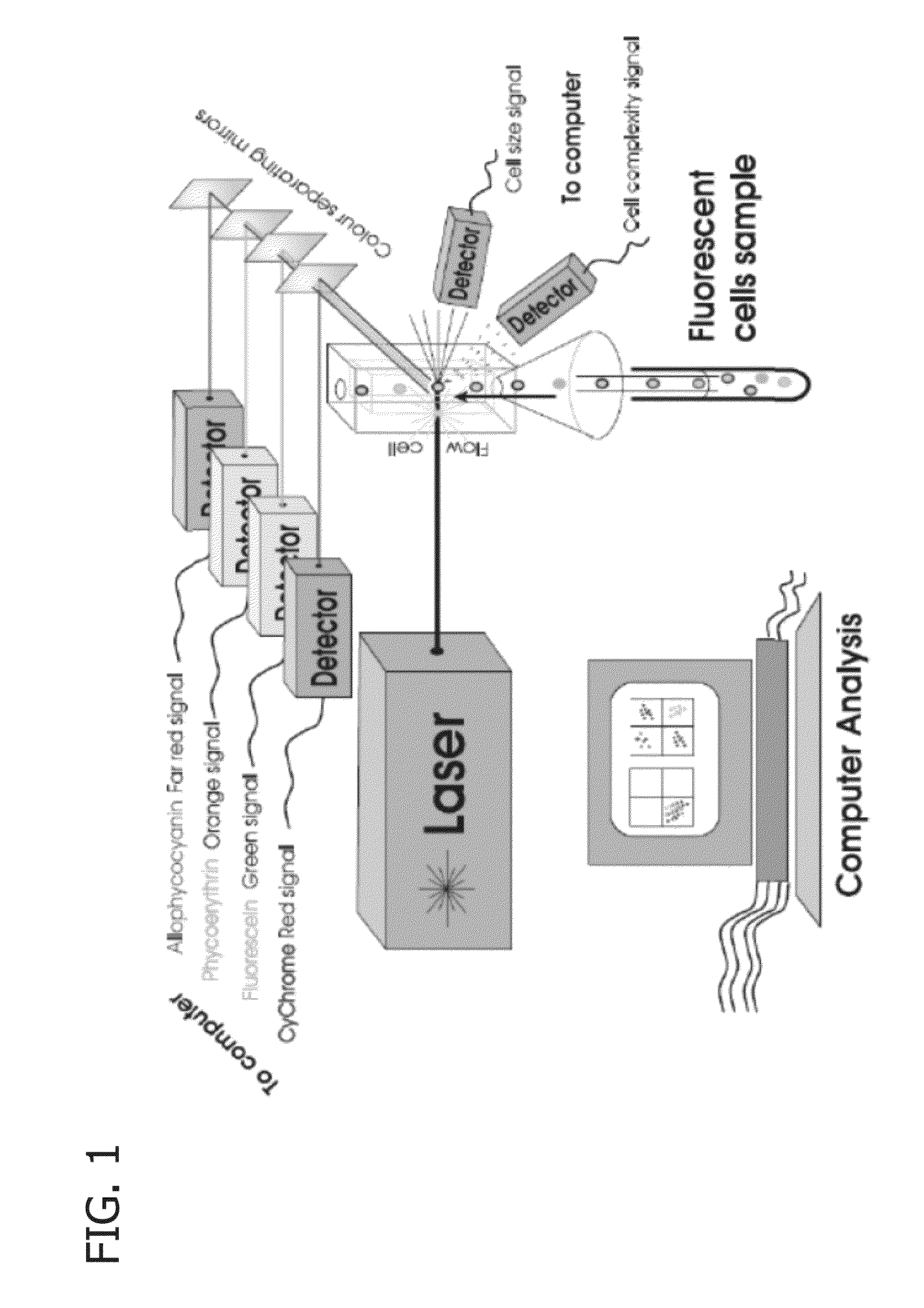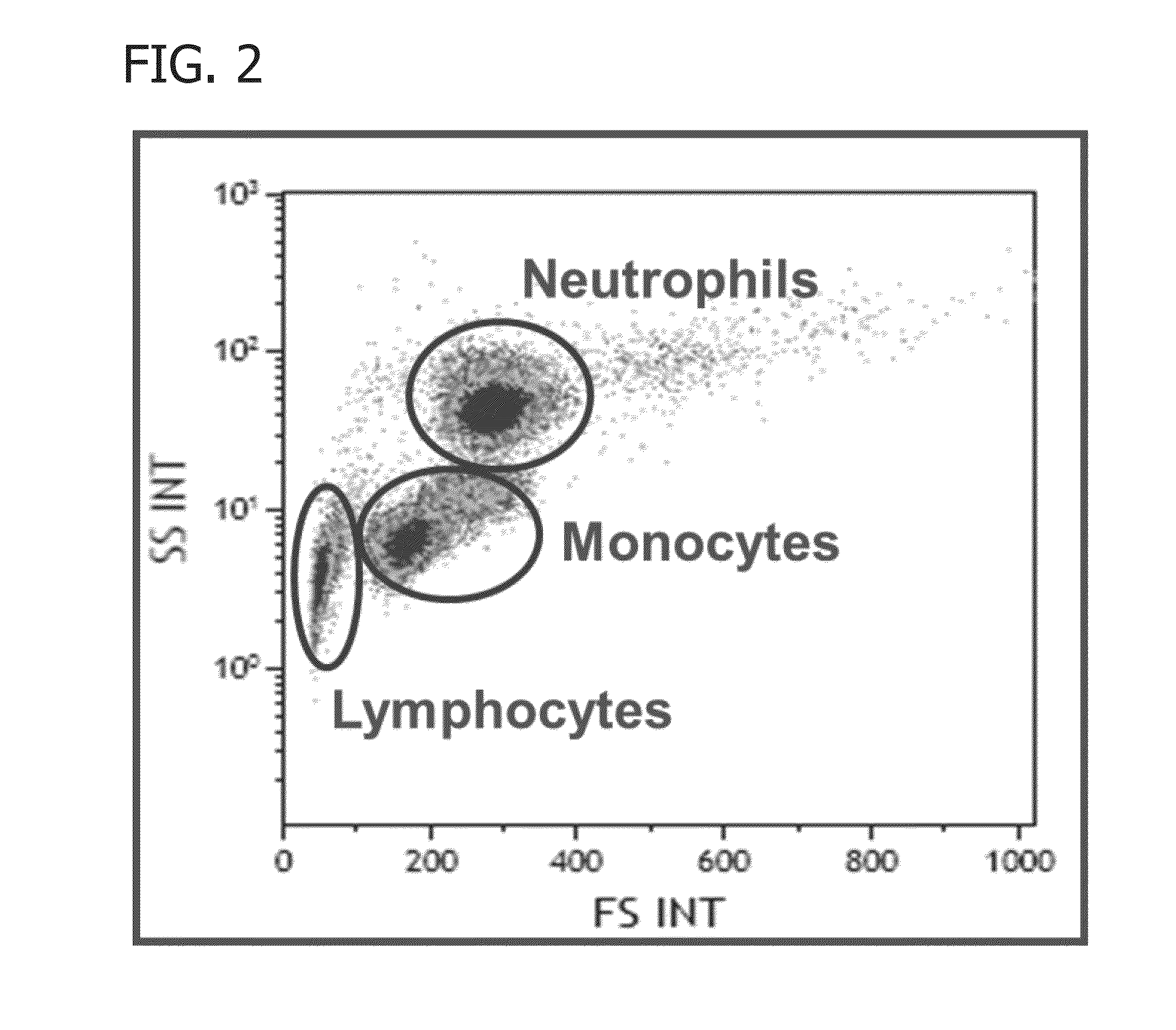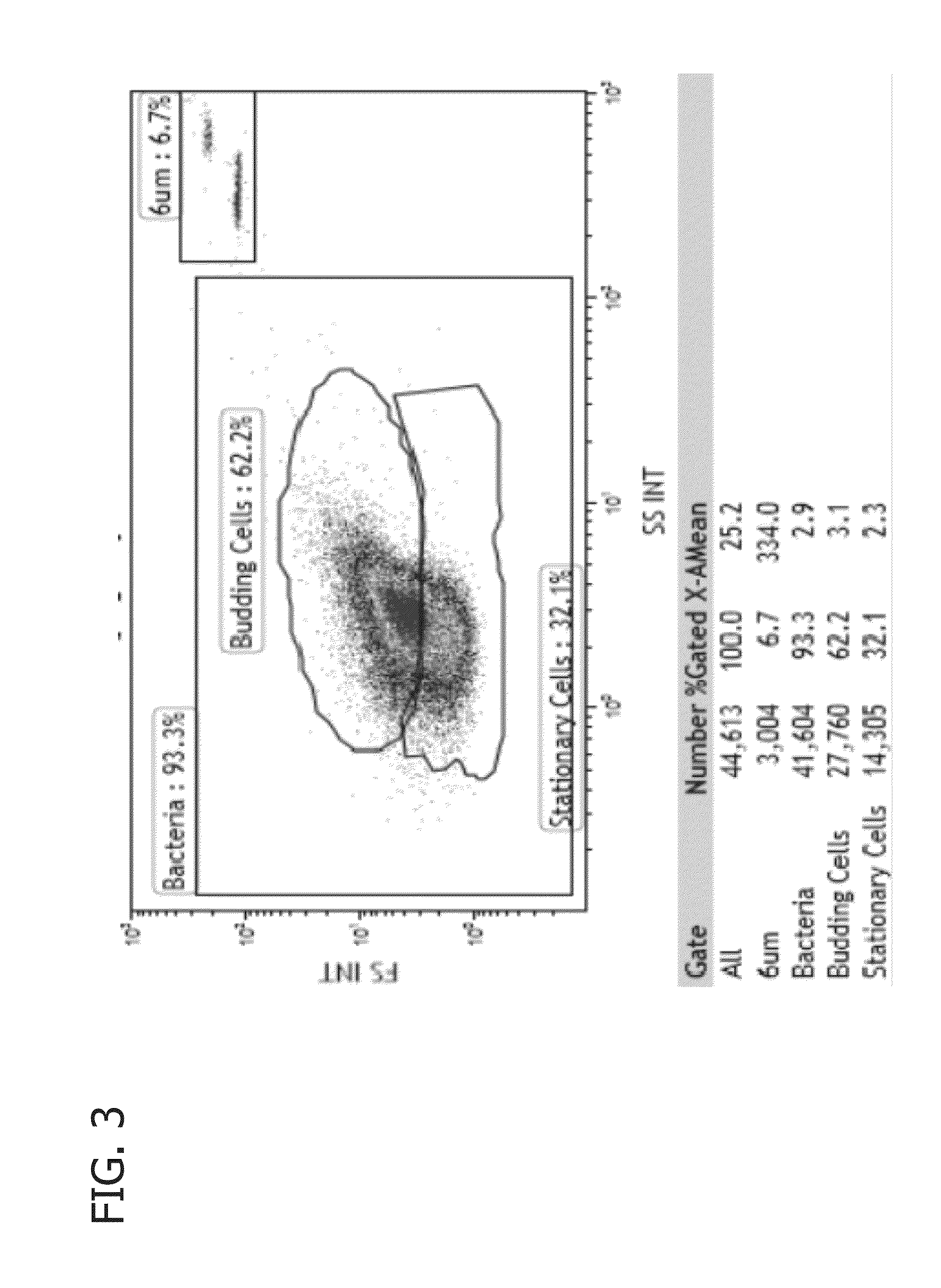Methods of determining biocide efficacy or mechanism of action using flow cytometry
a flow cytometry and efficacy technology, applied in the field of methods of determining biocide efficacy or mechanism of action using flow cytometry, can solve the problems of reducing the time for biocide optimization, reducing the time for photometry, and reducing the risk of microbial control in oilfield systems
- Summary
- Abstract
- Description
- Claims
- Application Information
AI Technical Summary
Benefits of technology
Problems solved by technology
Method used
Image
Examples
example 1
Preparation of Flow Cytometry Samples
[0106]Field fluid samples were collected by preparing a clean and preferably sterile container for sample collection. The container was filled completely to leave no head space for air. The container was taken to a clean lab space, its contents were poured into a separation funnel, and the aqueous phase was decanted into a sterile container.
[0107]A stock counting bead solution was prepared by placing an aqueous suspension of 6 μm counting beads containing 1.0×108 beads / mL (B-7277, available commercially from Life Technologies, Carlsbad, Calif.) in a warm water bath for 10 minutes. The suspension was vortexed for 15 seconds, then 200 μL of the suspension was added to 4000 μL of dfPBS and vortexed for 30 seconds to produce a stock counting bead solution. The concentration of the stock counting bead solution was measured using a hemocytometer and standard methods.
[0108]A stock staining solution was prepared by mixing 50 μL of Sytox® Red Stain (S3485...
example 2
[0114]The efficacy of the biocide orthophythaldehyde+DDAC quaternary ammonium compound in a 1:2 wt.ratio at controlling Escherichia coli (E. coli) growth in LB media was evaluated. A simulated field fluid was prepared containing LB media without any biocide chemical treatment which was separated into batches to which 0 ppm, 75 ppm, 150 ppm, 300 ppm, 600 ppm, and 1200 ppm of the biocide were added, respectively. Half of the batch containing zero biocide (“UnTreated 0 hr”) and the batches to which biocide was added were prepared into flow cytometry samples according to Example 1. The remaining half of the batch containing zero biocide was incubated for four hours (“UnTreated 4 hr”) at 37° C. prior to being prepared into a flow cytometry sample according to the procedure set forth above.
[0115]Flow cytometry was performed on all flow cytometry samples using a Gallios™ flow cytometer with 10 colors and 3 lasers (561 ready), and data was collected for forward scattered sig...
example 3
Synergy Between Didecyldimethylammonium Chloride (DDAC) and Tributyl Tetradecyl Phosphonium Chloride (TTPC)
[0120]The synergy between the efficacy of biocides didecyldimethylammonium chloride (DDAC) and tributyl tetradecyl phosphonium chloride (TTPC) at controlling E. coli growth in LB media was evaluated. A simulated field fluid was prepared containing LB media without any biocide chemical treatment, which was separated into batches to which zero and 40 ppm of biocide in ratios (DDAC:TTPC) of 10:0, 9:1, 7:3, 5:5, 3:7, 1:9 and 0:10 were added, respectively. Half of the batch containing zero biocide (“UnTreated 0 hr”) and the batches to which biocide was added were prepared into flow cytometry samples according to Example 1. The remaining half of the batch containing zero biocide was incubated for four hours (“UnTreated 4 hr”) at 37° C. prior to being prepared into a flow cytometry sample according to Example 1.
[0121]Flow cytometry was performed on all flow cytometry samples as set fo...
PUM
 Login to View More
Login to View More Abstract
Description
Claims
Application Information
 Login to View More
Login to View More - R&D
- Intellectual Property
- Life Sciences
- Materials
- Tech Scout
- Unparalleled Data Quality
- Higher Quality Content
- 60% Fewer Hallucinations
Browse by: Latest US Patents, China's latest patents, Technical Efficacy Thesaurus, Application Domain, Technology Topic, Popular Technical Reports.
© 2025 PatSnap. All rights reserved.Legal|Privacy policy|Modern Slavery Act Transparency Statement|Sitemap|About US| Contact US: help@patsnap.com



